A key is the most basic input device for a system which can do some process. The key input can be found in electrical, electronic and mechanical devices. In case of the Personal Computers a group of keys are arranged in a single board called keyboard. The PC are mostly using QWERTY keyboard which has evolved from the mechanical typewriter device. Keyboards are interfaced in basically using two methods one is through USB port and the other through PS2 port.
Any AVR microcontroller based board which follows the standard Arduino schematic and is flashed with the Arduino bootloader can be called an arduino board. The arduino boot-loader enables different Arduino boards to be connected and programmed with the Arduino IDE. The Arduino board used in this project is the Arduino pro-mini board and the IDE version of the arduino is 1.0.3 for windows.
The image of the Arduino pro-mini board and the Arduino IDE are shown below;
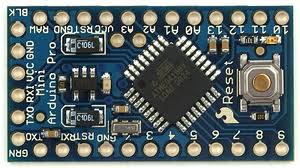
Fig. 2: Typical Arduino Pro-Mini Board
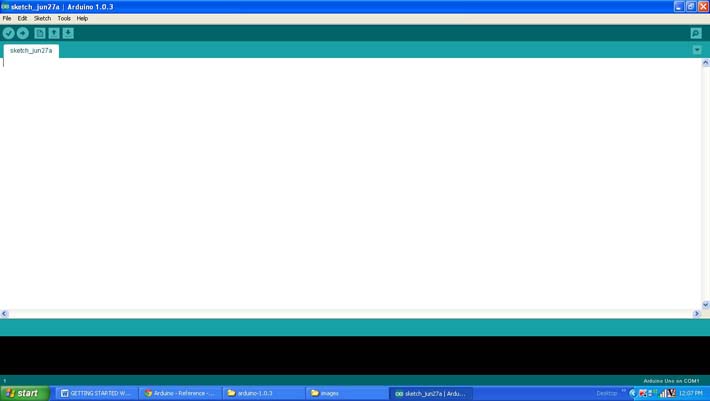
Fig. 3: Arduino IDE Software Window
Since the Arduino pro-mini board has no circuitary for interfacing it with the serial port or the USB port of the PC, an external USB to TTL converter board is required to connect it with the PC. This hardware helps in programming the Arduino board and also helps in the serial communication with the USB port of the PC.
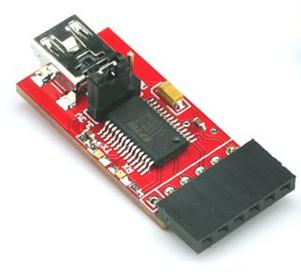
Fig. 4: External USB to TTL converter board for programming Arduino and serial communication
It is assumed that the reader has gone through the projecthow to get started with the Arduino and tried out all the things discussed there.
The image of the PS2 male pin
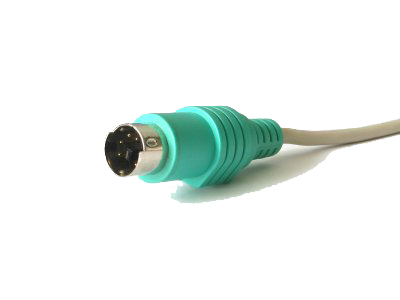
Fig. 5: 6 pin mini-DIN Male connector for PS2 interface
The image of the PS2 female pin
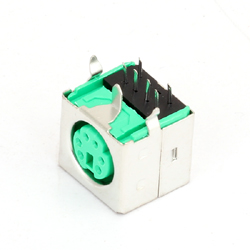
Fig. 6: 6 Pin Mini DIN Female Connector Plug for PS2 interface
The pin-out of the PS2 male and female connectors
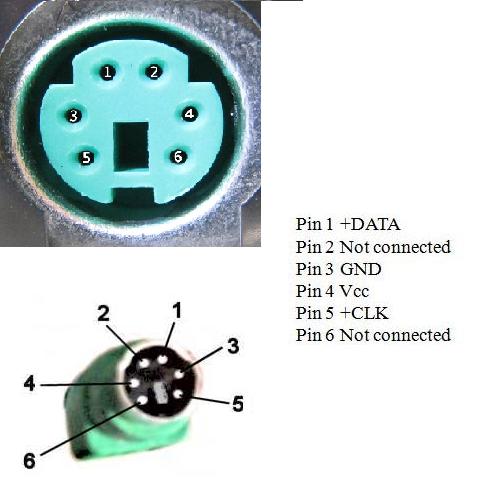
Fig. 7: Pin-Out Of PS2 Male and Female Connectors
When it comes to connecting the female connector with the circuit board one should be able to identify the pins at the bottom of the PS2 connector and the following image will be helpful.
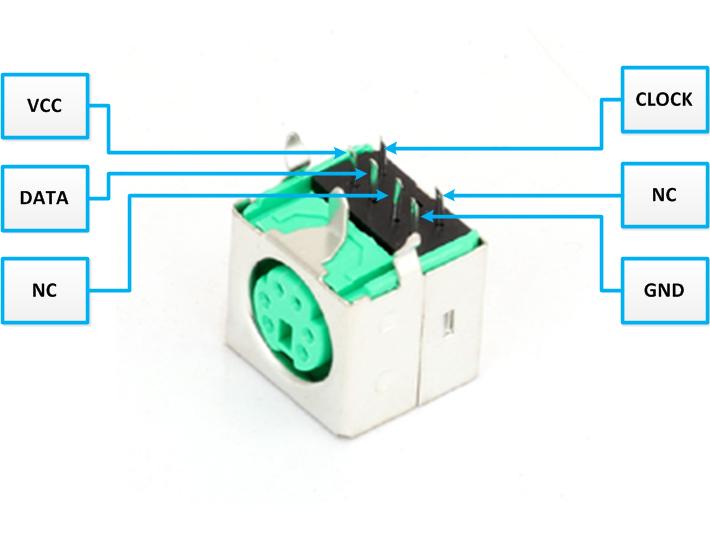
Fig. 8: Bottom of Mini DIN Female Connector Plug for PS2 interface
The code written for this project uses the custom PS2 library file called “PS2Keyboard.h” which has all the necessary routines for accessing a PS2 mouse. There are basically three functions which the user can directly make use in their code and are namely “keyboard.begin()”,keyboard.available() and “mouse.report(data)”. The details of the functions are discussed in the following.
keyboard.begin()
The function keyboard.begin() is used to perform all the necessary things to initialize an ASCII keyboard using PS2 protocol. Once the initialization is done properly each time a key is pressed the keyboard starts sending the equivalent ASCII value of the key which has been pressed. The function takes one parameter and it is the number of the pin in the Arduino board which acts as the Data pin of the keyboard.
keyboard.available()
This function can be used to check if a data regarding a key press is available from the keyboard. This function is always called before calling the keyboard.read() function which is used to read the data from the keyboard. The function returns a non-zero positive value whenever a key press is detected.
keyboard.read()
The function keyboard.read() can be used to read the ASCII value of a key which has been pressed from the keyboard. The function does not take any parameter and it returns the ASCII value of the key. The function keyboard.read() is always called after the function keyboard.read() returns a non-zero positive value.
The code written for this project can read the value form PS2 keyboard and can display the same character in the Serial Monitor window. The values are displayed on the Serial monitor window with the help of the functions Serial.begin(),Serial.print() and Serial.println() which are already discussed in previous projects on how to do serial communication with the Arduino, how to send and receive serial data using arduino and how to do serial debugging with the Arduino.
Project Source Code
### /*============================ EG LABS ===================================// Demonstration on how interface ps2keyboard with the Arduino The circuit: LCD: * LCD RS pin to digital pin 12 * LCD Enable pin to digital pin 11 * LCD D4 pin to digital pin 7 * LCD D5 pin to digital pin 6 * LCD D6 pin to digital pin 5 * LCD D7 pin to digital pin 4 * LCD R/W pin to ground * 10K resistor: * ends to +5V and ground * wiper to LCD pin 3 * LED anode attached to digital output 9 * LED cathode attached to ground through a 1K resistor KEYBVOARD: DATA PIN TO PIN NUMBER 8 CLOCK PIN TO PIN NUMBER 3 ============================== EG LABS ===================================*/ #include "PS2Keyboard.h" // include the library code: #include <LiquidCrystal.h> // initialize the library with the numbers of the interface pins LiquidCrystal lcd(12, 11, 7, 6, 5, 4); #define DATA_PIN 8 PS2Keyboard keyboard; void setup() { pinMode(9, OUTPUT); lcd.begin(16, 2); lcd.print("ENGINEERS GARAGE"); lcd.setCursor(0, 1); lcd.print(" PS2 KEYBOARD "); keyboard.begin(DATA_PIN); // initialize the PS2 keyboard Serial.begin(9600); Serial.println("ENGINEERS GARAGE"); delay(1000); digitalWrite(9, HIGH); } void loop() { if(keyboard.available()) // check if there is any data coming from the keyboard { char dat = keyboard.read(); // read the data from the keyboard Serial.write(dat); }else; } //*************PS2.h****************//#include <avr/io.h> #include <avr/interrupt.h> #include <avr/pgmspace.h> #include "Arduino.h" #include "PS2Keyboard.h" #include "binary.h" typedef uint8_t boolean; typedef uint8_t byte; /* * I do know this is so uncool, but I just don't see a way arround it * REALLY BAD STUFF AHEAD * * The variables are used for internal status management of the ISR. The're * not kept in the object instance because the ISR has to be as fast as anyhow * possible. So the overhead of a CPP method call is to be avoided. * * PLEASE DO NOT REFER TO THESE VARIABLES IN YOUR CODE AS THEY MIGHT VANISH SOME * HAPPY DAY. */ int ps2Keyboard_DataPin; byte ps2Keyboard_CurrentBuffer; volatile byte ps2Keyboard_CharBuffer; volatile byte ps2Keyboard_BufferPos; // variables used to remember information about key presses volatile bool ps2Keyboard_shift; // indicates shift key is pressed volatile bool ps2Keyboard_ctrl; // indicates the ctrl key is pressed volatile bool ps2Keyboard_alt; // indicates the alt key is pressed volatile bool ps2Keyboard_extend; // remembers a keyboard extended char received volatile bool ps2Keyboard_release; // distinguishes key presses from releases volatile bool ps2Keyboard_caps_lock; // remembers shift lock has been pressed // vairables used in sending command bytes to the keyboard, eg caps_lock light volatile boolean cmd_in_progress; volatile int cmd_count; byte cmd_value; volatile byte cmd_ack_value; byte cmd_parity; volatile boolean cmd_ack_byte_ok; // sending command bytes to the keybaord needs proper parity (otherwise the keyboard // just asks you to repeat the byte) byte odd_parity(byte val) { int i, count = 1; // start with 0 for even parity for (i=0; i<8; i++) { if (val&1) count++; val = val>>1; } return count & 1; // bottom bit of count is parity bit } void kbd_send_command(byte val) { // stop interrupt routine from receiving characters so that we can use it // to send a byte cmd_in_progress = true; cmd_count = 0; // set up the byte to shift out and initialise the ack bit cmd_value = val; cmd_ack_value = 1; // the kbd will clear this bit on receiving the byte cmd_parity = odd_parity(val); // set the data pin as an output, ready for driving digitalWrite(ps2Keyboard_DataPin, HIGH); pinMode(ps2Keyboard_DataPin, OUTPUT); // drive clock pin low - this is going to generate the first // interrupt of the shifting out process pinMode(PS2_INT_PIN, OUTPUT); digitalWrite(PS2_INT_PIN, LOW); // wait at least one clock cycle (in case the kbd is mid transmission) delayMicroseconds(60); // set up the 0 start bit digitalWrite(ps2Keyboard_DataPin, LOW); // let go of clock - the kbd takes over driving the clock from here digitalWrite(PS2_INT_PIN, HIGH); pinMode(PS2_INT_PIN, INPUT); // wait for interrupt routine to shift out byte, parity and receive ack bit while (cmd_ack_value!=0) ; // switch back to the interrupt routine receiving characters from the kbd cmd_in_progress = false; } void PS2Keyboard::reset() { kbd_send_command(0xFF); // send the kbd reset code to the kbd: 3 lights // should flash briefly on the kbd // reset all the global variables ps2Keyboard_CurrentBuffer = 0; ps2Keyboard_CharBuffer = 0; ps2Keyboard_BufferPos = 0; ps2Keyboard_shift = false; ps2Keyboard_ctrl = false; ps2Keyboard_alt = false; ps2Keyboard_extend = false; ps2Keyboard_release = false; ps2Keyboard_caps_lock = false; cmd_in_progress = false; cmd_count = 0; cmd_value = 0; cmd_ack_value = 1; } // val : bit_2=caps_lock, bit_1=num_lock, bit_0=scroll_lock void kbd_set_lights(byte val) { // When setting the lights with the 0xED command the keyboard responds // with an "ack byte", 0xFA. This is NOT the same as the "ack bit" that // follows the succesful shifting of each command byte. See this web // page for a good description of all this: // http://www.beyondlogic.org/keyboard/keybrd.htm cmd_ack_byte_ok = false; // initialise the ack byte flag kbd_send_command(0xED); // send the command byte while (!cmd_ack_byte_ok) ; // ack byte from keyboard sets this flag kbd_send_command(val); // now send the data } // The ISR for the external interrupt // This may look like a lot of code for an Interrupt routine, but the switch // statements are fast and the path through the routine is only ever a few // simple lines of code. void ps2interrupt (void) { int value = digitalRead(ps2Keyboard_DataPin); // This is the code to send a byte to the keyboard. Actually its 12 bits: // a start bit, 8 data bits, 1 parity, 1 stop bit, 1 ack bit (from the kbd) if (cmd_in_progress) { cmd_count++; // cmd_count keeps track of the shifting switch (cmd_count) { case 1: // start bit digitalWrite(ps2Keyboard_DataPin,LOW); break; case 2: case 3: case 4: case 5: case 6: case 7: case 8: case 9: // data bits to shift digitalWrite(ps2Keyboard_DataPin,cmd_value&1); cmd_value = cmd_value>>1; break; case 10: // parity bit digitalWrite(ps2Keyboard_DataPin,cmd_parity); break; case 11: // stop bit // release the data pin, so stop bit actually relies on pull-up // but this ensures the data pin is ready to be driven by the kbd for // for the next bit. digitalWrite(ps2Keyboard_DataPin, HIGH); pinMode(ps2Keyboard_DataPin, INPUT); break; case 12: // ack bit - driven by the kbd, so we read its value cmd_ack_value = digitalRead(ps2Keyboard_DataPin); cmd_in_progress = false; // done shifting out } return; // don't fall through to the receive section of the ISR } // receive section of the ISR // shift the bits in if(ps2Keyboard_BufferPos > 0 && ps2Keyboard_BufferPos < 11) { ps2Keyboard_CurrentBuffer |= (value << (ps2Keyboard_BufferPos - 1)); } ps2Keyboard_BufferPos++; // keep track of shift-in position if(ps2Keyboard_BufferPos == 11) { // a complete character received switch (ps2Keyboard_CurrentBuffer) { case 0xF0: { // key release char ps2Keyboard_release = true; ps2Keyboard_extend = false; break; } case 0xFA: { // command acknowlegde byte cmd_ack_byte_ok = true; break; } case 0xE0: { // extended char set ps2Keyboard_extend = true; break; } case 0x12: // left shift case 0x59: { // right shift ps2Keyboard_shift = ps2Keyboard_release? false : true; ps2Keyboard_release = false; break; } case 0x11: { // alt key (right alt is extended 0x11) ps2Keyboard_alt = ps2Keyboard_release? false : true; ps2Keyboard_release = false; break; } case 0x14: { // ctrl key (right ctrl is extended 0x14) ps2Keyboard_ctrl = ps2Keyboard_release? false : true; ps2Keyboard_release = false; break; } case 0x58: { // caps lock key if (!ps2Keyboard_release) { ps2Keyboard_caps_lock = ps2Keyboard_caps_lock? false : true; // allow caps lock code through to enable light on and off ps2Keyboard_CharBuffer = ps2Keyboard_CurrentBuffer; } else { ps2Keyboard_release = false; } break; } default: { // a real key if (ps2Keyboard_release) { // although ignore if its just released ps2Keyboard_release = false; } else { // real keys go into CharBuffer ps2Keyboard_CharBuffer = ps2Keyboard_CurrentBuffer; } } } ps2Keyboard_CurrentBuffer = 0; ps2Keyboard_BufferPos = 0; } } PS2Keyboard::PS2Keyboard() { // nothing to do here } void PS2Keyboard::begin(int dataPin) { // Prepare the global variables ps2Keyboard_DataPin = dataPin; ps2Keyboard_CurrentBuffer = 0; ps2Keyboard_CharBuffer = 0; ps2Keyboard_BufferPos = 0; ps2Keyboard_shift = false; ps2Keyboard_ctrl = false; ps2Keyboard_alt = false; ps2Keyboard_extend = false; ps2Keyboard_release = false; ps2Keyboard_caps_lock = false; cmd_in_progress = false; cmd_count = 0; cmd_value = 0; cmd_ack_value = 1; // initialize the pins pinMode(PS2_INT_PIN, INPUT); digitalWrite(PS2_INT_PIN, HIGH); pinMode(dataPin, INPUT); digitalWrite(dataPin, HIGH); attachInterrupt(1, ps2interrupt, FALLING); #if 0 // Global Enable INT1 interrupt EIMSK |= ( 1 << INT1); // Falling edge triggers interrupt EICRA |= (0 << ISC10) | (1 << ISC11); #endif } bool PS2Keyboard::available() { return ps2Keyboard_CharBuffer != 0; } // This routine allows a calling program to see if other other keys are held // down when a character is received: ie <ctrl>, <alt>, <shift> or <shift_lock> // Note that this routine must be called after available() has returned true, // but BEFORE read(). The read() routine clears the buffer and allows another // character to be received so these bits can change anytime after the read(). byte PS2Keyboard::read_extra() { return (ps2Keyboard_caps_lock<<3) | (ps2Keyboard_shift<<2) | (ps2Keyboard_alt<<1) | ps2Keyboard_ctrl; } byte PS2Keyboard::read() { byte result; // read the raw data from the keyboard result = ps2Keyboard_CharBuffer; // Use a switch for the code to character conversion. // This is fast and actually only uses 4 bytes per simple line switch (result) { case 0x1C: result = 'a'; break; case 0x32: result = 'b'; break; case 0x21: result = 'c'; break; case 0x23: result = 'd'; break; case 0x24: result = 'e'; break; case 0x2B: result = 'f'; break; case 0x34: result = 'g'; break; case 0x33: result = 'h'; break; case 0x43: result = 'i'; break; case 0x3B: result = 'j'; break; case 0x42: result = 'k'; break; case 0x4B: result = 'l'; break; case 0x3A: result = 'm'; break; case 0x31: result = 'n'; break; case 0x44: result = 'o'; break; case 0x4D: result = 'p'; break; case 0x15: result = 'q'; break; case 0x2D: result = 'r'; break; case 0x1B: result = 's'; break; case 0x2C: result = 't'; break; case 0x3C: result = 'u'; break; case 0x2A: result = 'v'; break; case 0x1D: result = 'w'; break; case 0x22: result = 'x'; break; case 0x35: result = 'y'; break; case 0x1A: result = 'z'; break; // note that caps lock only used on a-z case 0x41: result = ps2Keyboard_shift? '<' : ','; break; case 0x49: result = ps2Keyboard_shift? '>' : '.'; break; case 0x4A: result = ps2Keyboard_shift? '?' : '/'; break; case 0x54: result = ps2Keyboard_shift? '{' : '['; break; case 0x5B: result = ps2Keyboard_shift? '}' : ']'; break; case 0x4E: result = ps2Keyboard_shift? '_' : '-'; break; case 0x55: result = ps2Keyboard_shift? '+' : '='; break; case 0x29: result = ' '; break; case 0x45: result = ps2Keyboard_shift? ')' : '0'; break; case 0x16: result = ps2Keyboard_shift? '!' : '1'; break; case 0x1E: result = ps2Keyboard_shift? '@' : '2'; break; case 0x26: result = ps2Keyboard_shift? '£' : '3'; break; case 0x25: result = ps2Keyboard_shift? '$' : '4'; break; case 0x2E: result = ps2Keyboard_shift? '%' : '5'; break; case 0x36: result = ps2Keyboard_shift? '^' : '6'; break; case 0x3D: result = ps2Keyboard_shift? '&' : '7'; break; case 0x3E: result = ps2Keyboard_shift? '*' : '8'; break; case 0x46: result = ps2Keyboard_shift? '(' : '9'; break; case 0x0D: result = 't'; break; case 0x5A: result = 'n'; break; case 0x66: result = PS2_KC_BKSP; break; case 0x69: result = ps2Keyboard_extend? PS2_KC_END : '1'; break; case 0x6B: result = ps2Keyboard_extend? PS2_KC_LEFT : '4'; break; case 0x6C: result = ps2Keyboard_extend? PS2_KC_HOME : '7'; break; case 0x70: result = ps2Keyboard_extend? PS2_KC_INS : '0'; break; case 0x71: result = ps2Keyboard_extend? PS2_KC_DEL : '.'; break; case 0x72: result = ps2Keyboard_extend? PS2_KC_DOWN : '2'; break; case 0x73: result = '5'; break; case 0x74: result = ps2Keyboard_extend? PS2_KC_RIGHT : '6'; break; case 0x75: result = ps2Keyboard_extend? PS2_KC_UP : '8'; break; case 0x76: result = PS2_KC_ESC; break; case 0x79: result = '+'; break; case 0x7A: result = ps2Keyboard_extend? PS2_KC_PGDN : '3'; break; case 0x7B: result = '-'; break; case 0x7C: result = '*'; break; case 0x7D: result = ps2Keyboard_extend? PS2_KC_PGUP : '9'; break; case 0x58: // setting the keyboard lights is done here. Ideally it would be done // in the interrupt routine itself and the key codes associated wth // caps lock key presses would never be passed on as characters. // However it would make the interrupt routine very messy with lots // of extra state associated with the control of a caps_lock // key code causing a cmd byte to transmit, causing an ack_byte to // be received, then a data byte to transmit. Much easier done here. // The downside, however, is that the light going on or off at the // right time relies on the calling program to be checking for // characters on a regular basis. If the calling program stops // polling for characters at any point pressing the caps lock key // will not change the state of the caps lock light while polling // is not happening. result = ps2Keyboard_caps_lock? PS2_KC_CLON : PS2_KC_CLOFF; if (ps2Keyboard_caps_lock) kbd_set_lights(4); else kbd_set_lights(0); break; // Reset the shift counter for unexpected values, to get back into sink // This allows for hot plugging a keyboard in and out default: delay(500); // but wait a bit in case part way through a shift ps2Keyboard_BufferPos = 0; ps2Keyboard_shift = false; ps2Keyboard_ctrl = false; ps2Keyboard_alt = false; ps2Keyboard_extend = false; ps2Keyboard_release = false; ps2Keyboard_caps_lock = false; } // end switch(result) // shift a-z chars here (less code than in the switch statement) if (((result>='a') && (result<='z')) && ((ps2Keyboard_shift && !ps2Keyboard_caps_lock) || (!ps2Keyboard_shift && ps2Keyboard_caps_lock))) { result = result + ('A'-'a'); } // done with the character ps2Keyboard_CharBuffer = 0; return(result); }###
Project Source Code
### #ifndef PS2Keyboard_h #define PS2Keyboard_h #include <avr/io.h> #include <avr/interrupt.h> #include <avr/pgmspace.h> /* * PS2 keyboard "make" codes to check for certain keys. */ // Give these codes that aren't used by anything else // Making all the control key codes above 0x80 makes it simple to check for // printable characters at the calling level. #define PS2_KC_BKSP 0x80 #define PS2_KC_UP 0x81 #define PS2_KC_DOWN 0x82 #define PS2_KC_LEFT 0x83 #define PS2_KC_RIGHT 0x84 #define PS2_KC_PGDN 0x85 #define PS2_KC_PGUP 0x86 #define PS2_KC_END 0x87 #define PS2_KC_HOME 0x88 #define PS2_KC_INS 0x89 #define PS2_KC_DEL 0x8A #define PS2_KC_ESC 0x8B #define PS2_KC_CLON 0x8C // caps_lock on #define PS2_KC_CLOFF 0x8D // caps_lock off #include "binary.h" typedef uint8_t boolean; typedef uint8_t byte; /* * This PIN is hardcoded in the init routine later on. If you change this * make sure you change the interrupt initialization as well. */ #define PS2_INT_PIN 3 /** * Purpose: Provides an easy access to PS2 keyboards * Author: Christian Weichel */ class PS2Keyboard { private: int m_dataPin; byte m_charBuffer; public: /** * This constructor does basically nothing. Please call the begin(int) * method before using any other method of this class. */ PS2Keyboard(); /** * Starts the keyboard "service" by registering the external interrupt. * setting the pin modes correctly and driving those needed to high. * The propably best place to call this method is in the setup routine. */ void begin(int dataPin); /** * Returns true if there is a char to be read, false if not. */ bool available(); /** * Sends a reset command to the keyboard and re-initialises all the control * variables within the PS2Keybaord code. */ void reset(); /** * Returns the char last read from the keyboard. If the user has pressed two * keys between calls to this method, only the later one will be availble. Once * the char has been read, the buffer will be cleared. * If there is no char availble, 0 is returned. */ byte read(); /** * Returns the status of the <ctrl> key, the <alt> key, the <shift> key and the * caps_lock state. Note that shift and caps_lock are handled within the * Ps2Keyboard code (and the return value from read() is already modified), but * being able to read them here may be useful. * This routine is optional BUT MUST ONLY be read after available() has returned * true and BEFORE read() is called to retrieve the character. Reading it after * the call to read() will return unpredictable values. */ byte read_extra(); }; #endif ###
Circuit Diagrams
Project Components
Project Video
Filed Under: Arduino
Filed Under: Arduino

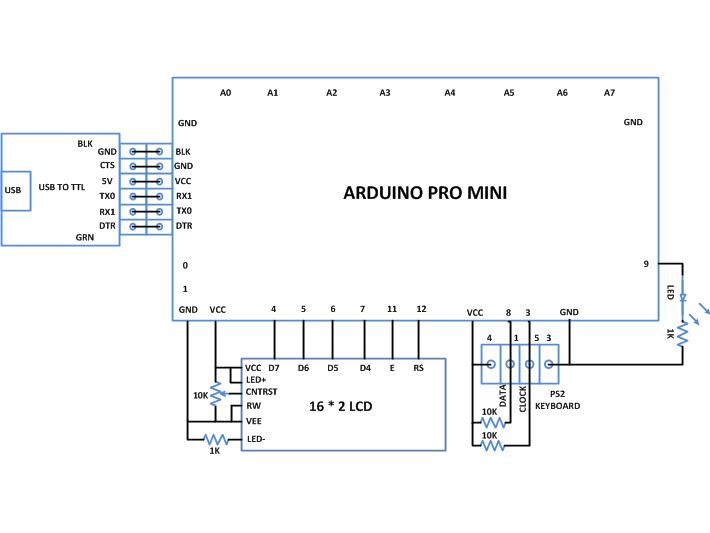

Questions related to this article?
👉Ask and discuss on EDAboard.com and Electro-Tech-Online.com forums.
Tell Us What You Think!!
You must be logged in to post a comment.